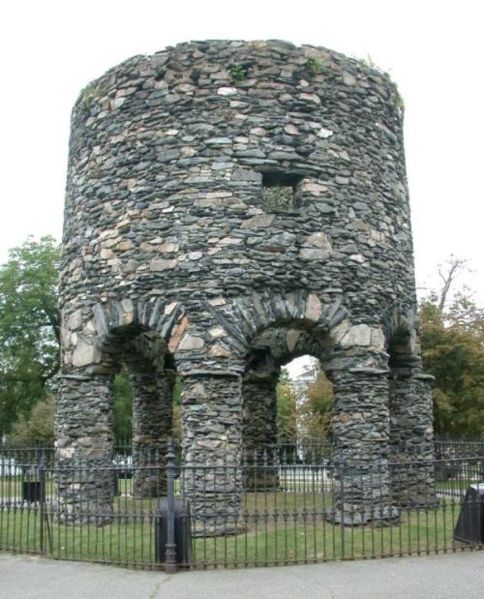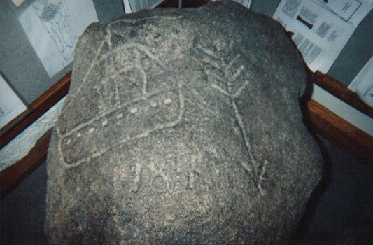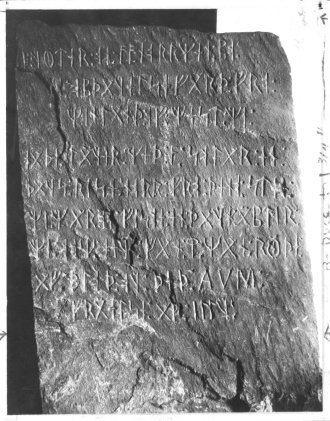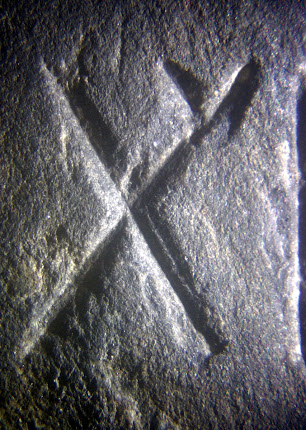The Newport Tower

Medieval stone tower ... in Rhode Island. Does it look like any other Colonial structure you've seen? Recent carbon dating of the mortar indicates 1400s construction date (see post below).
The Westford Knight Sword
Medieval Battle Sword ... in Westford, Massachusetts. Can anyone deny the pommel, hilt and blade punch-marked into the bedrock?
The Spirit Pond Rune Stone
Medieval Inscription ... in Maine, near Popham Beach. Long passed off as a hoax, but how many people know the Runic language? And how is it that some of the Runic characters match rare runes on inscriptions found in Minnesota and Rhode Island? Carbon-dating of floorboards at nearby long house date to 1405.
The Narragansett Rune Stone

Medieval Inscription ... in Rhode Island's Narragansett Bay. This Runic inscription is only visible for twenty minutes a day at low tide--is this also the work of a modern-day, Runic-speaking hoaxster?
The Westford Boat Stone

Medieval Ship Carving ... in Westford, MA. Found near the Westford Knight site. Weathering patterns of carving are consistent with that of 600-year-old artifact. And why would a Colonial trail-marker depict a knorr, a 14th-century ship?
The Kensington Rune Stone

Medieval Inscription... in Minnesota. Forensic geology confirms the carvings predate European settlement of Minnesota--so did Runic-speaking Native Americans carve it?
The Hooked X Rune

Medieval Runic Character ... on inscriptions found in Maine, Minnesota and Rhode Island. But this rare rune was only recently found in Europe. This conclusively disproves any hoax theory while also linking these three artifacts together.
Monday, August 18, 2008
Report from Atlantic Conference
Just back from the Atlantic Conference in Halifax. The highlight, for me, was information provided by Native American leaders that their oral history speaks of many waves of contact, pre-Columbus, between the Native peoples and Europeans. In particular, they spoke of a late 14th-century period of contact. This, of course, is consistent with many of the artifacts and sites in New England and maritime Canada. Unfortunately, no major announcement linking the Sinclair clan and the Mi'kmaq tribe via DNA testing--apparently the research is ongoing, and it is promising, but it has not been completed yet. Even without the DNA "smoking gun," the tidal wave of evidence presented at the conference left little doubt in my mind that Columbus was, indeed, very late to the North American party.
Wednesday, August 6, 2008
Atlantic Conference
For those interested in the study of pre-Columbian exploration of North America, the upcoming Atlantic Conference in Halifax, Nova Scotia August 15-17 promises to be a special treat. http://www.atlanticconference.org/ The organizers are hinting at a major announcement--perhaps definitive DNA evidence genetically linking Prince Henry Sinclair to the Mi'kmaq tribe circa 1400?
Labels:
DNA,
Knights Templar,
Newport Tower,
Prince Henry,
Sinclair,
Westford Knight
Subscribe to:
Posts (Atom)